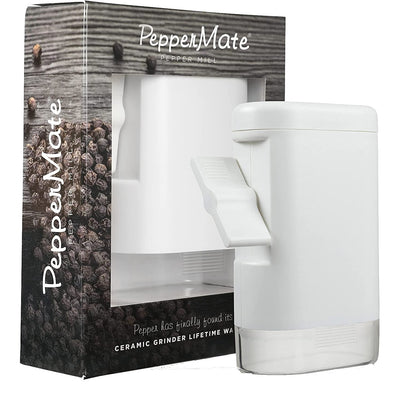How to Grow Your Herbs for a Homegrown Provencal Blend

The cultivation of a personal Provencal Herb Blend not only enriches the palate but also transforms the home garden into a fragrant oasis reminiscent of southern France's landscapes.
The journey begins with the selection of quintessential herbs—such as lavender, thyme, rosemary, and marjoram—that thrive under specific conditions of light, soil, and care. Identifying an ideal location that mimics the Mediterranean climate, coupled with understanding the nuances of soil preparation, can set the foundation for a flourishing herb garden.
Creating your Provencal herb blend not only adds a touch of southern France to your dishes but also imbues your culinary creations with authenticity and flavor. Before diving into your garden project, it's worthwhile to familiarize yourself with the essence of Herbs de Provence, understanding how each herb contributes to this quintessentially French blend.
Once your garden is thriving, you'll be ready to explore the top ten recipes that use Herbs de Provence, bringing the taste of Provence right to your table. For those looking to broaden their spice repertoire, consider delving into the ultimate list of spices and herbs, which can inspire further gardening and culinary ventures. Lastly, mastering how to use Herbs de Provence in cooking can elevate your dishes, offering a sensorial journey to the heart of Provencal cuisine.
In a Nutshell
- Choose traditional Provencal herbs like rosemary, thyme, oregano, and savory for a homegrown Provencal blend.
- Ensure proper sunlight exposure and well-draining soil for the herbs' growth.
- Find a balance in watering and avoid overfeeding to promote healthy growth.
- Regular pruning, maintenance, and harvesting are essential for a bountiful herb harvest.
Choosing Your Herbs
Selecting the right combination of herbs is crucial for crafting an authentic Provencal blend that embodies the essence of Southern French cuisine. Traditional Provencal herbs include rosemary, thyme, oregano, and savory, each contributing unique flavors and aromas.
Rosemary, with its woody fragrance, pairs well with grilled meats and vegetables. Thyme, versatile in its use, adds depth to soups and stews. Oregano, known for its robust flavor, is essential in tomato-based dishes, while savory, with its peppery taste, complements beans and meats.
When choosing herbs for your garden, consider the specific growing conditions each plant requires. Full sun and well-drained soil are fundamental for these Mediterranean natives, ensuring a bountiful harvest ready to transform your culinary creations.
Selecting the Ideal Location
Identifying the perfect spot for your herb garden involves considering several critical factors, such as sunlight exposure and soil drainage, to ensure the thriving growth of your Provencal blend.
Most herbs native to the Provence region of France, such as thyme, rosemary, and lavender, require at least six hours of direct sunlight daily. These herbs also prefer well-draining soil, as waterlogged roots can lead to disease and inhibit growth.
When selecting a location, assess the area's exposure to sunlight throughout the day and consider the soil's composition. If necessary, amend the soil with organic matter to improve drainage.
Elevating your herb garden in raised beds or containers can also enhance drainage and facilitate better root development, ensuring a bountiful and aromatic harvest.
Soil Preparation and Planting
Preparing the soil for your herb garden is a crucial step in ensuring the successful growth of your Provencal herbs.
Begin by ensuring that the selected area has well-draining soil, as stagnant water can lead to root rot.
Incorporate organic matter such as compost or aged manure to enrich the soil with nutrients. This amendment improves soil structure, water retention, and drainage, creating an ideal environment for herb roots.
Testing the soil pH is also essential; most herbs prefer a neutral to slightly alkaline pH level. If necessary, adjust the pH by adding lime to increase alkalinity or sulfur to increase acidity.
Once the soil is prepared, plant your herbs either from seeds or seedlings, spacing them according to their mature size to ensure proper air circulation and sunlight exposure.
Watering and Feeding
After ensuring the soil is optimally prepared for your Provencal herbs, the next critical step is establishing an effective watering and feeding regimen to support their growth.
Watering should be approached with a balance in mind; too little and the herbs may not thrive, too much and you risk root rot. Most Provencal herbs, being native to the Mediterranean region, prefer well-drained soil and can tolerate somewhat dry conditions. Thus, allowing the soil to dry slightly between waterings is advisable.
Feeding your herbs is equally important. Opt for a balanced, slow-release organic fertilizer applied in the early growing stages and sparingly thereafter. Overfeeding can lead to excessive foliage with diminished flavor. Remember, the goal is to mimic the natural, somewhat nutrient-poor conditions of their native habitat to enhance their aromatic qualities.
Managing Sunlight and Temperature
How do Provencal herbs, with their Mediterranean origins, respond to the sunlight and temperature conditions in your garden? These herbs thrive in conditions that mimic their native environment—full sun and warm temperatures.
Most Provencal herbs require at least six to eight hours of direct sunlight daily to develop their full flavor. They are heat-loving plants, with optimal growth temperatures ranging between 70°F and 80°F. However, they can tolerate higher temperatures if properly acclimated. It's crucial to monitor your garden's microclimate, as excessive heat can stress plants, leading to leaf scorch or halted growth.
In cooler climates, consider using a greenhouse or cloche to extend the growing season. Adjusting planting locations to ensure maximum sunlight exposure and using mulch to regulate soil temperature can significantly benefit plant health and yield.
Pruning and Maintenance
To ensure the vitality and productivity of your Provencal herbs, regular pruning and maintenance are essential practices.
Pruning not only helps in shaping the plants but also stimulates growth, allowing for a bountiful harvest. Begin by removing any dead or diseased foliage, which can hinder the plant's development and attract pests.
Make your cuts just above new leaf nodes to encourage branching. For perennial herbs like rosemary and thyme, a good rule of thumb is to prune no more than one-third of the plant at a time to avoid stress.
Additionally, regular weeding around your herbs is crucial to prevent competition for nutrients and water.
With these maintenance steps, your Provencal herb garden will thrive, providing fresh flavors for your culinary creations.
Harvesting Your Herbs
Harvesting your herbs at the right moment is crucial for capturing the peak of their flavor and aromatic properties. The optimal time for gathering most herbs is just before they flower when their essential oils are most potent.
Early morning, after the dew has evaporated but before the sun becomes too intense, is the ideal time for harvesting. Use sharp scissors or shears to make clean cuts, taking care not to damage the plant.
For herbs like rosemary, thyme, and oregano, cutting just above a leaf node encourages bushier growth. Gather your herbs in small bunches and rinse gently if necessary, but be mindful that water can dilute their essential oils.
Proper harvesting not only ensures the highest quality for your Provencal blend but also promotes the health and longevity of your herb garden.
Storing and Using Your Blend
Once harvested and prepared, storing your Provencal herb blend correctly is essential to preserve its flavor and aroma for future culinary use. The ideal method is to keep the blend in an airtight container, away from direct sunlight and moisture, which can degrade its quality. Glass jars with tight-sealing lids work best for this purpose, ensuring that the herbs remain dry and their essential oils, responsible for their distinct flavors and fragrances, are preserved.
When using your blend, remember that dried herbs have a more concentrated flavor than fresh ones. Start with a smaller amount than you might use if the herbs were fresh, and adjust to taste.
This homegrown Provencal blend will elevate your dishes, adding a touch of the Mediterranean to your cooking, from simple salads to intricate stews.
What does RawSpiceBar have to offer?
Herbs de Provence

Description: (Herbs de Provence)
In an ideal scenario, with just the flick of our wrists, we could find ourselves wandering the magnificent southern expanse of France, immersing ourselves in the purple hues of lavender fields, discovering quaint villages, and naturally, seeking out a culinary experience enhanced with Herbs de Provence. Fortunately, with our RawSpiceBar Herbs de Provence Blend, you can experience the delightful blend of thyme, fennel, rosemary, marjoram, savory, tarragon, basil, chervil, mint, and lavender from the comfort of your kitchen.
-Complimentary shipping within the US
-Secure payment options
→ We also offer Individual Blends for those who prefer to handpick their spice adventures.
→ For even more flavor try (Spice Subscription)




















Leave a comment